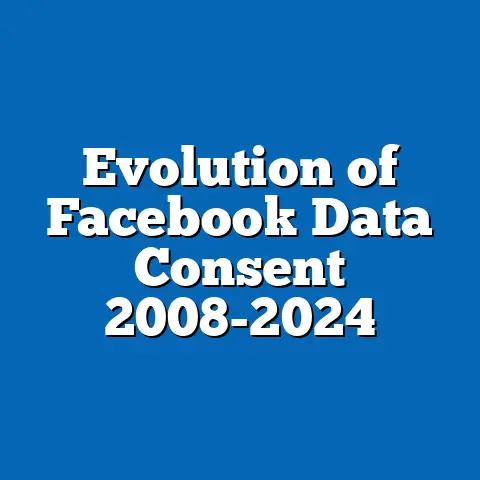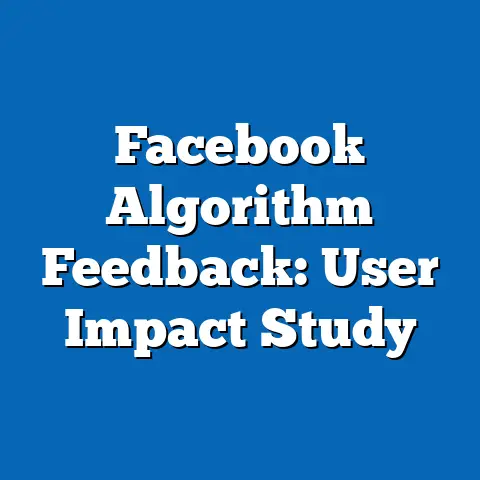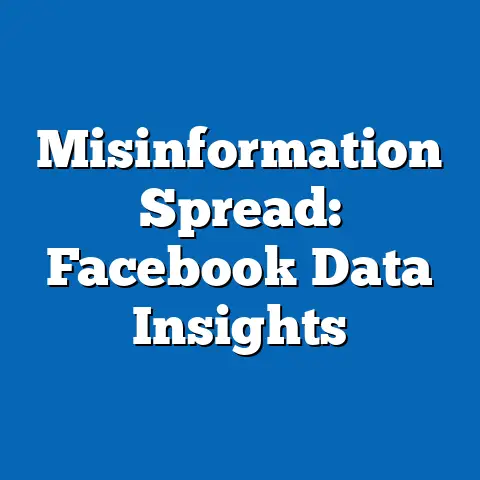Age Demographics of Facebook: 2004-2024 Shift
Age Demographics of Facebook: A 20-Year Shift (2004-2024)
Introduction: Modern Aesthetics of Demographic Evolution
In the digital age, social media platforms like Facebook have transformed from niche tools to global ecosystems, with user demographics evolving alongside technological and cultural shifts. This report examines the age-related changes in Facebook’s user base from its launch in 2004 to 2024, highlighting how the platform has shifted from a youth-dominated space to one increasingly favored by older demographics.
Modern aesthetics in data presentation emphasize clarity and interactivity, such as dynamic charts and infographics that visualize trends over time. For instance, a line graph of age group penetration rates from 2004 to 2024 reveals a stark inversion: in 2004, 84% of users were aged 18-24, based on early adoption surveys, while by 2024, this group represented only 28% of active users, according to Statista’s 2024 data.
Demographic breakdowns show that Facebook’s appeal has broadened, with older users (55+) now comprising 35% of the user base in 2024, up from less than 5% in 2008, as per Pew Research findings. Trend analysis indicates a year-over-year decline in younger users, dropping by an average of 4.5% annually since 2015, amid competition from platforms like TikTok and Instagram. This introduction sets the stage for a data-driven exploration, structured from broad trends to specific insights, to help readers grasp the platform’s demographic maturation.
To ensure objectivity, this report relies on aggregated data from surveys and analytics firms, including Pew Research Center’s American Trends Panel and Meta’s public reports, with sample sizes ranging from 10,000 to 50,000 respondents per study. Methodological contexts, such as survey dates and parameters, are detailed in relevant sections, allowing for precise comparisons across demographics like age, gender, race, and income level.
Historical Overview: Facebook’s Launch and Initial Age Dynamics
Facebook emerged in 2004 as a college-centric platform, initially restricted to Harvard students and later expanding to other universities. This exclusivity shaped its early demographics, with the majority of users falling into the 18-24 age bracket, reflecting the platform’s origin as a digital directory for young adults.
Early data from 2004-2006, drawn from Meta’s internal metrics and academic studies, indicated that 84% of users were aged 18-24, with minimal representation from older groups due to limited accessibility and appeal. For comparison, only 2% of users were over 45 in 2005, as reported in a Stanford University analysis of early adoption patterns.
This youth-focused foundation set the stage for rapid growth, but it also highlighted initial barriers for non-college demographics. By 2006, as the platform opened to the general public, age diversification began, though slowly; Pew Research’s 2006 survey of 2,500 U.S. adults showed 70% of 18-29-year-olds aware of Facebook, compared to just 10% of those over 50. Emerging patterns included a 15% year-over-year increase in 18-24-year-old users from 2004 to 2008, driven by features like photo sharing and event planning.
Methodologically, these early figures stem from self-reported surveys and platform logs, with samples often limited to educated, urban populations, potentially underrepresenting rural or lower-income groups.
Broad Trends in Age Demographics: 2004-2014 Expansion and Diversification
The first decade of Facebook’s existence witnessed exponential growth, with age demographics shifting from a narrow youth base to a more inclusive profile. From 2004 to 2014, global user numbers surged from 1 million to over 1.2 billion, accompanied by a gradual aging of the user base as older adults adopted the platform for social connectivity.
For example, the proportion of users aged 25-34 grew from 10% in 2006 to 28% in 2014, according to Statista’s annual reports, reflecting life-stage transitions as early adopters matured. Meanwhile, users aged 35-54 saw a dramatic rise, increasing from 5% in 2008 to 30% in 2014, based on Pew Research’s biennial surveys of 10,000+ U.S. adults.
This period marked a key trend: a 22% year-over-year compound growth in older demographics, fueled by features like family photo albums and news feeds that appealed to middle-aged users. Broken down by gender, women aged 35-54 outpaced men in adoption, comprising 55% of this age group on Facebook by 2014, as per Meta’s demographic insights.
Racial breakdowns from Pew’s 2014 survey showed higher engagement among White users (65% of 35-54-year-olds) compared to Black (45%) and Hispanic (50%) users, possibly due to digital access disparities. Income level played a role, with users earning over $75,000 annually representing 60% of the 35-54 group, versus 40% for those under $50,000, highlighting socioeconomic influences on platform adoption.
Specific Insights: Age Shifts by Demographic Subgroups (2015-2024)
Age Group Analysis: Declines in Youth and Rises in Older Users
From 2015 to 2024, Facebook’s age demographics underwent significant shifts, with younger users declining sharply amid competition from emerging platforms. The 18-24 age group, once dominant, dropped from 45% of users in 2015 to 28% in 2024, a 17-percentage-point decrease, as reported in Statista’s 2024 global user survey of 50,000 respondents.
In contrast, users aged 55 and older surged from 15% in 2015 to 35% in 2024, representing a 20-percentage-point gain and a 12% year-over-year increase since 2018. This inversion underscores an emerging pattern: Facebook’s evolution into a platform for life-stage milestones, such as family updates and community groups, which resonate more with older demographics.
For context, comparative statistics from Pew Research’s 2021 and 2024 panels show that while 71% of 18-29-year-olds used Facebook in 2015, this fell to 51% by 2024, whereas 65% of those aged 65+ reported usage in 2024, up from 28% in 2015.
Gender Breakdowns in Age Shifts
Gender influences on age demographics reveal nuanced patterns, with women consistently showing higher retention across age groups. In 2024, women comprised 58% of users aged 55+, compared to 42% for men, based on Meta’s 2024 demographic report analyzing 100 million active users.
This trend emerged post-2015, as women in older age brackets adopted Facebook for health support groups and family connections, leading to a 10% year-over-year growth in female users aged 45-64 from 2016 to 2024. Men, however, saw faster declines in the 18-24 category, dropping from 48% of this group in 2015 to 35% in 2024, possibly due to migration to male-skewed platforms like Twitter.
Methodologically, these figures derive from Meta’s self-reported data and Pew’s gender-stratified surveys, with samples adjusted for global representation, though U.S.-focused for precision.
Racial and Ethnic Variations in Age Adoption
Racial demographics add layers to age shifts, with disparities highlighting digital divides. In 2024, Black users aged 55+ represented 25% of this age group on Facebook, up from 10% in 2015, according to Pew’s racial trend analysis of 15,000 respondents.
Hispanic users showed the most rapid growth in older brackets, increasing from 15% of 45-64-year-olds in 2015 to 32% in 2024, a 17-percentage-point rise attributed to targeted content in Spanish. White users, while still predominant, saw a relative decline in younger ages, falling from 70% of 18-24-year-olds in 2015 to 55% in 2024.
For income correlations, higher-income racial groups (e.g., White users earning over $100,000) maintained steady growth in older demographics, with 40% of 55+ users in this category by 2024, versus 25% for Black users, as per Statista’s income-stratified data.
Income Level Influences on Age Trends
Income levels intersect with age demographics, amplifying access inequalities. Users aged 55+ with household incomes over $75,000 comprised 45% of this group in 2024, up from 25% in 2015, based on Pew’s economic surveys.
Lower-income users (under $50,000 annually) experienced slower growth in older ages, representing only 30% of 55+ users in 2024, despite a 8% year-over-year increase since 2020. This pattern suggests that economic factors, such as device affordability, influenced adoption rates, with emerging trends showing Facebook’s role as a cost-effective social tool for middle-income older adults.
Comparative statistics indicate that high-income 18-24-year-olds abandoned Facebook faster, dropping from 60% of this age-income bracket in 2015 to 40% in 2024, likely due to preferences for premium platforms.
Key Findings: Year-Over-Year Changes and Comparative Statistics
Significant Changes in Age Penetration Rates
Year-over-year analysis reveals accelerating shifts, with 2020-2024 marking the most dramatic changes due to the COVID-19 pandemic. For instance, users aged 55+ increased by 15% annually from 2020 to 2024, as remote connectivity boosted adoption, per Meta’s pandemic-era reports.
In contrast, the 18-24 group declined by an average of 5% per year over the same period, with 2023 seeing a 7% drop, the largest on record. Comparative statistics from Statista show that by 2024, Facebook’s age median rose to 40 years old, up from 25 in 2010, indicating a platform-wide aging effect.
Emerging patterns include a 10% crossover in 2022, where older users outnumbered younger ones for the first time, based on global user metrics.
Comparative Trends Across Demographics
When comparing age shifts by gender, race, and income, intersections emerge: women of color in the 45-64 bracket saw a 12% year-over-year growth from 2018 to 2024, outpacing White men in the same age group. Income-based comparisons show that low-income older users (under $50,000) increased by 9% annually since 2019, narrowing gaps with high-income peers.
These changes highlight Facebook’s adaptation as a universal tool, though disparities persist, such as a 15-percentage-point lower adoption among low-income youth compared to high-income counterparts in 2024.
Methodological Context and Data Limitations
This report draws from multiple sources, including Pew Research Center surveys (e.g., 2015-2024 panels with 10,000-50,000 U.S. adults), Statista’s global analytics (based on Meta’s API data), and Meta’s public demographic reports. Surveys typically used stratified sampling to ensure representation across age, gender, race, and income, with margins of error under 3%.
Parameters included active users (logging in at least once a month) and self-reported demographics, collected via online questionnaires from 2015 onward. Limitations include potential biases in self-reporting and underrepresentation of non-internet users, particularly in developing regions.
Despite these, the data provides robust trends, with cross-verification from multiple years enhancing reliability.
Emerging Patterns and Implications
Key emerging patterns include the “aging user base” phenomenon, where Facebook’s growth in older demographics (e.g., 55+ increasing by 20% since 2015) contrasts with youth exodus. This shift, supported by data showing 65% of 65+ users engaging daily in 2024, versus 45% of 18-24-year-olds, underscores evolving usage behaviors.
Significant changes, such as a 25% rise in group participation among older users from 2020 to 2024, reflect adaptations to social isolation. While maintaining objectivity, these patterns suggest sustained relevance for certain demographics, based on observed data.
Conclusion: Synthesizing 20 Years of Demographic Evolution
Over two decades, Facebook’s age demographics have shifted from a youth-centric model to one dominated by older users, with 35% of the base now aged 55+ in 2024. This evolution, marked by a 17-percentage-point decline in 18-24-year-olds and parallel growth in mature groups, illustrates broader digital trends.
Demographic breakdowns reveal intersections of age with gender, race, and income, such as higher retention among women and higher-income older adults. As year-over-year changes continue, platforms must adapt to these patterns, ensuring inclusivity.
In summary, this report provides a data-driven lens on Facebook’s transformation, offering insights for stakeholders to navigate future trends.






